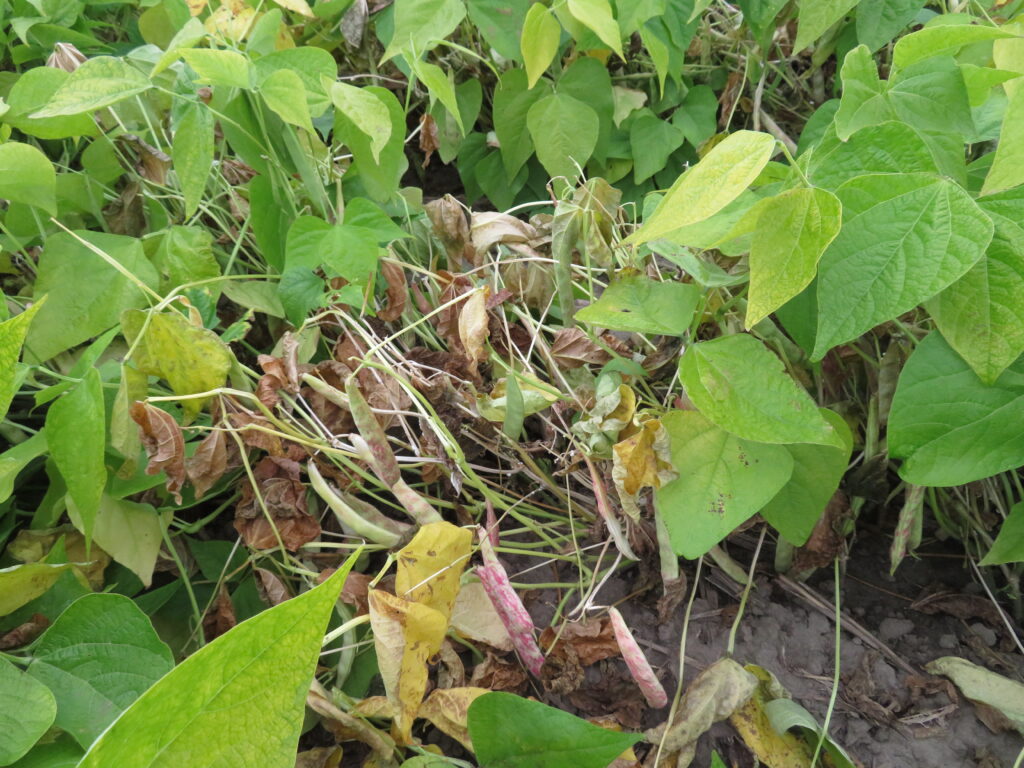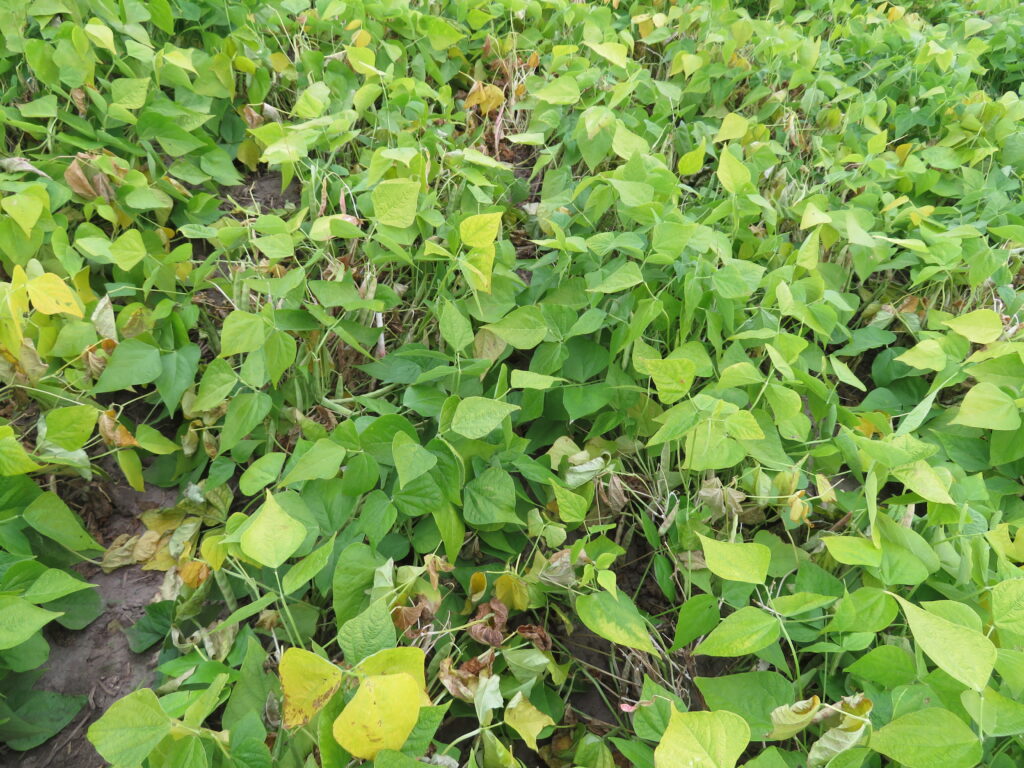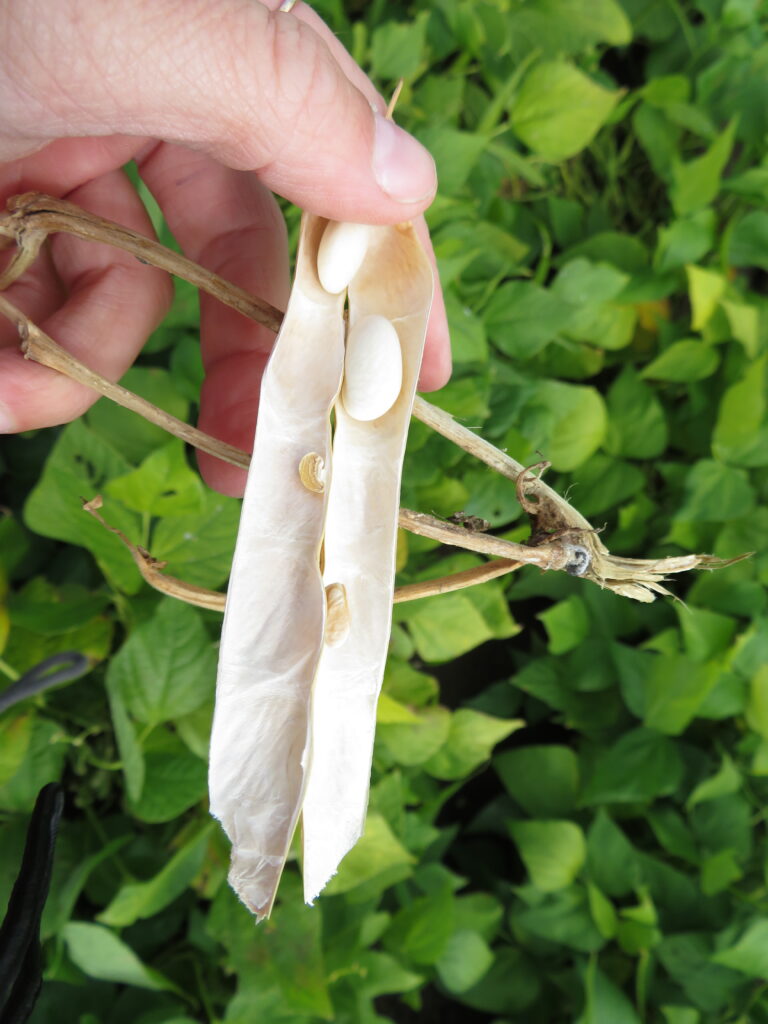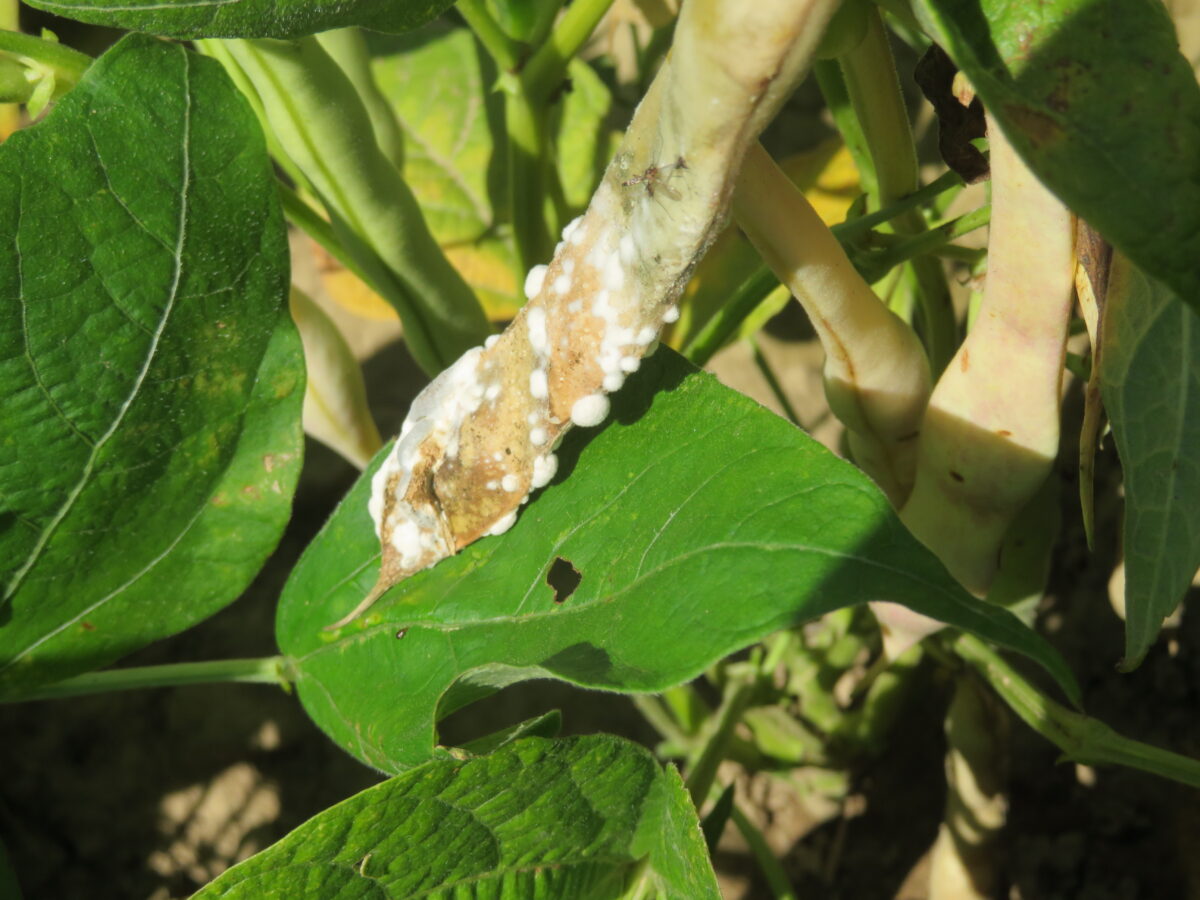White Mould (Sclerotinia sclerotiorum)
Incidence
White mould is a difficult disease to predict, although most years the appearance of the disease is higher in dry edible beans than in soybeans. The disease is most damaging when cool (moderate), wet conditions occur during flowering or near harvest.
Appearance
Initial infection takes place on plant tissue such as older flowers or possibly lower leaves that have died from other causes. Necrotic tissue is more susceptible to infection than healthy tissue. Infection of healthy pods, stems and leaves results from infected plant parts coming in contact with healthy plant tissue.
Infected areas are bleached, and white tufts of mould (mycelium) are usually present on the plant surface. Hard, black sclerotia are produced on the stem surface or within the stem. Sclerotia in the soil will produce mushroom-like structures called apothecia that eject spores onto host plants.

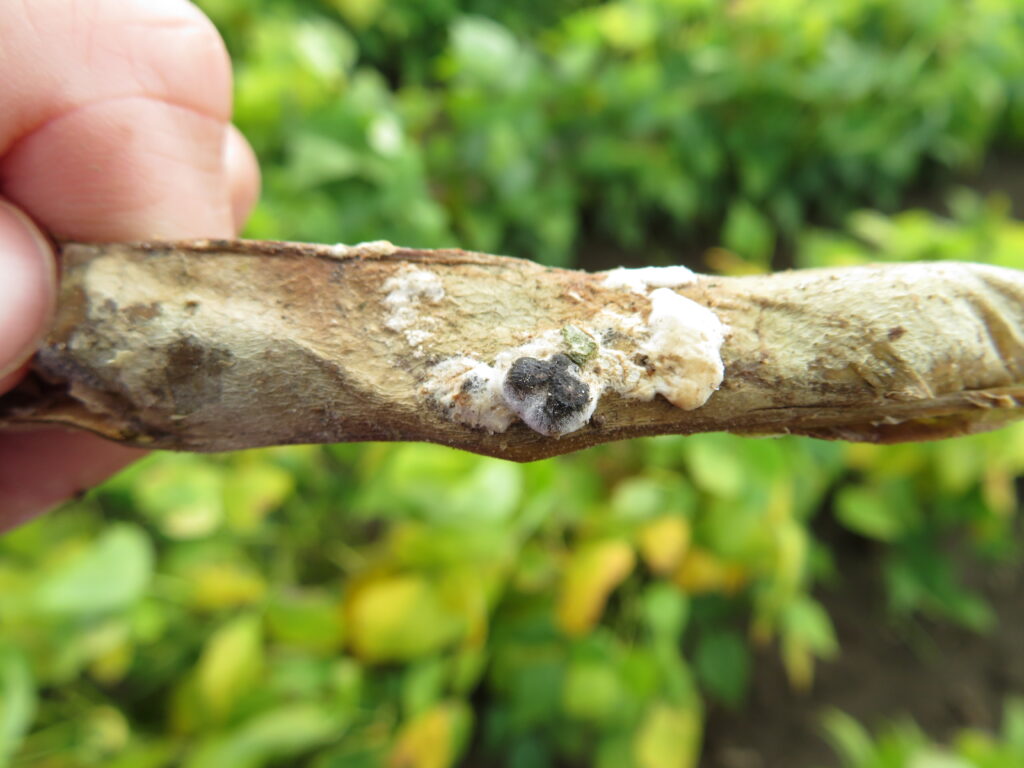
Management Strategies
The following practices will help minimize losses to white mould.
- Use less-susceptible varieties or varieties with an upright plant structure.
- Other field crops — such as soybeans, sugarbeets, canola, sunfowers and hemp — are all susceptible to white mould. In fields with a history of white mould, dry edible beans should not follow these crops.
- Increase air movement by planting at suggested rates and proper row widths, to reduce humidity and make the environment less favourable to white mould development. Avoid excessive use of fertilizers, which results in rapid canopy closure, making the environment favourable to infection by increasing humidity.
- Foliar fungicides have provided some control. For effective control, foliar sprays must be applied at prior to the appearance of disease. Effective control is achieved by applying fungicides at first flower, or prior to flower petal drop (at first pin pod).
- Sprays applied after the disease first appears do not control white mould effectively.
See OMAFRA Publication 812, Field Crop Protection Guide, for suggested fungicides or search this website for research results from fungicide evaluations conducted by Chris Gillard.
